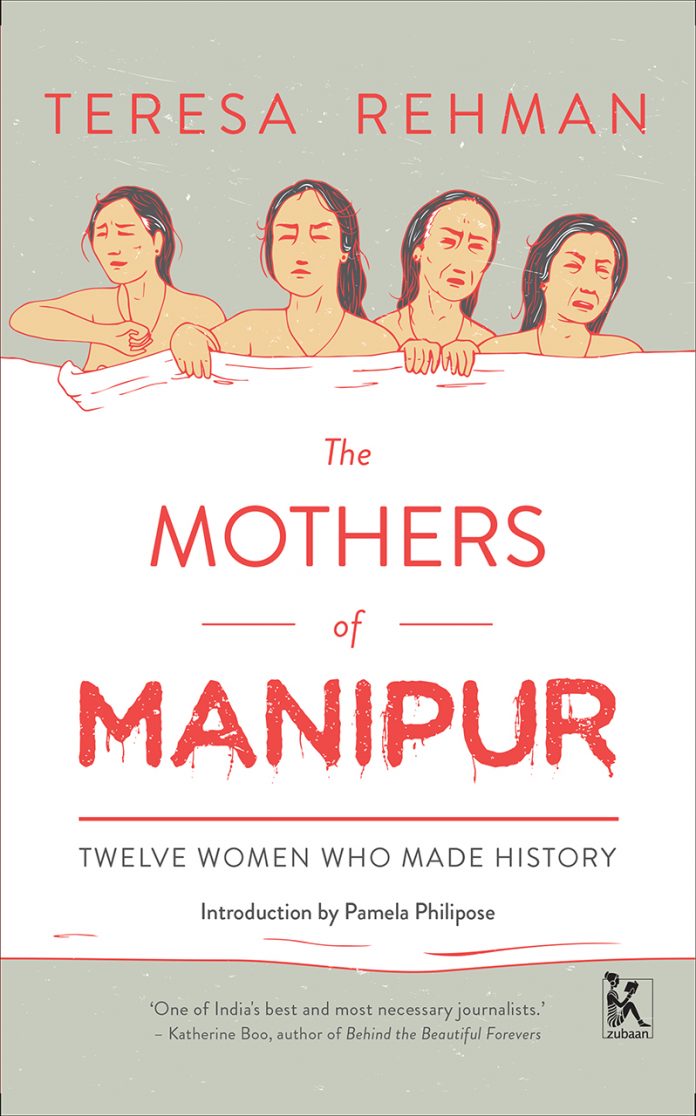By Aparna Sharma for TwoCircles.net
Protests often conjure in our minds images that are marked by confrontation, noise and tentativeness. We usually see protestors in quiet oppositional terms against the forces and instruments of power and injustice. Due to systemic reasons or sheer incompetence, the very media that ‘cover’ protests rarely take us into the everyday lives and the worlds that protestors occupy. A protestor is hardly ever a person who beyond protesting, is seen as living life. A life in which they breathe, love, educate themselves and others with a view to comprehend the many maneuvers that history throws their way. In July 2004, twelve mothers, most in their 60s and 70s, performed a protest that shook many an institution, conscience and the very concept of protest. In Imphal, the capital of the northeast Indian state of Manipur, twelve women stripped before the headquarters of the Assam Rifles at Kangla Fort. Shouting slogans: ‘Indian Army Rape Us’, ‘Take Our Flesh’ — these twelve imas (Manipuri for ‘mother’) had been provoked to action by the custodial death of a 32-years old woman, Thangjam Manorama, a suspected militant. Each protesting ima, like many older Manipuri women, symbolically claimed Manorama to be their daughter. The naked protest was an action by the mothers of Manipur seeking justice and security for the daughters and the indeed, the very future of the state.
The Mothers of Manipur is a short book by Teresa Rehman that offers the reader a comprehensive understanding of what brought the twelve imas to their now-famed and rather bleak action. Instantiated by Manorama’s custodial death, the Manipuri mothers’ naked protest was the release of a deeply felt cry against the state of affairs in Manipur, particularly under the Armed Forces Special Powers Act (AFSPA 1958) that legitimates violence including custodial deaths such as that of Manorama. Deeply contextual, in this book Rehman weaves the imas’ action, with their own life narratives and how those have been shaped by the history of Manipur over the last century. The book is made up of twelve chapters, each devoted to one of the protesting mothers. An award-winning journalist, Rehman travels and reports extensively from northeast India. During visits to Imphal following the naked protest, Rehman traced and met with all the living mothers who had participated in the protest. Through interviews, each reconstructed her life narrative, what brought her to the protest and, most significantly, how the protest sits in her life now. Reading these narratives, it is evident that the mothers have much to share, but tend to do so only with a sensitive and discerning listener, as Rehman.
Rehman’s writing is driven by a commitment to disturbing the understanding of the security regimes in Manipur as simply disciplining mechanisms that are geared to ‘correcting’ the Manipuris, the aberrant others in that equation. Rehman’s expression is measured and sensitive. Each chapter on a protesting ima introduces us to her world, its colours, sounds, smells and textures. Hope and despair come up repeatedly in the interviews, but Rehman carefully casts a wider span, exploring what it means to live as a Manipuri woman who has at her command a distinct cultural history.
Throughout the book, we learn about Manipuri culture and history — its landscape, arts and everyday ways of living. Rehman introduces the reader to such issues as alcoholism and underground political activity across Manipur. With equal detail she shares unique actions and initiatives that speak to the strength and resilience of the Manipuri people against a regime that is culturally and politically disengaged with them. For instance Rehman’s discussion of Arambam Angamba Singh’s Imphal War Museum showcasing relics of the Second World War reflects a peoples’ will to claim their place in world history for Manipur was a crucial battlefront where the Japanese and the Allied Forces had a lesser-known, but rather decisive encounter. Another compelling narrative surrounds Manipur’s widely acclaimed alternative theater artists, Heisnam Kanhailal and Heisnam Sabitri’s bold interpretation of Mahasweta Devi’s play, ‘Draupadi’ in which Sabitri stripped before soldiers on stage, asking them to see her nude. Rehman points out how this 2000 performance pre-empted the Manipuri mothers’ naked protest four years later.
A most significant moment in the book is Rehman’s interview with Manipur’s Iron Lady: Irom Chanu Sharmilla who went on hunger-strike for 16 years protesting against and seeking the repeal of the AFSPA. Sharmilla who spent over a decade in custody and, who has been highly recognized for her action, has seldom appeared in any media. Rehman’s interview brings out how Sharmilla perceives her own action. At the heart of Sharmilla’s hunger strike is a commitment to peace and this commitment informs her poetry as indeed her day-to-day proceedings in custody, giving her a quiet resilience and strength. Most candidly and touchingly Sharmilla reveals a vulnerable side to Rehman and shares how she overcomes moments of weakness that would compel her to break her hunger strike.
Without isolating or approaching the naked protest as a spectacle, Rehman gives the reader a quiet insight into the lives of the imas during and after the protest. What happened to them physically during the protest? A curfew had been imposed shortly after the protest. What happened to the imas when that curfew was imposed? How did they return to their homes and what were their encounters with their loved ones: spouses, children, grandchildren and neighbours like? A deeply researched book in very accessible language, The Mothers of Manipur offers holistic understanding of the cultural conditions of Manipur. The book asks us to appreciate the region’s culture and its women’s voices as deeply rooted in place and history, underscoring the need to approach the region through competing and humane perspectives.
The author is a documentary filmmaker and film scholar.


